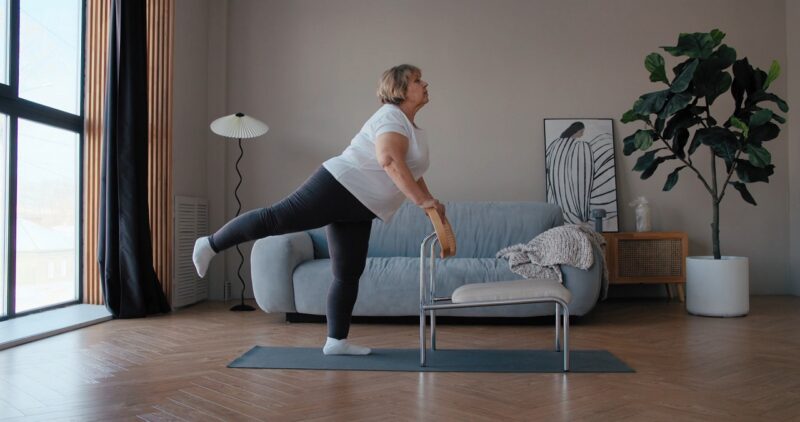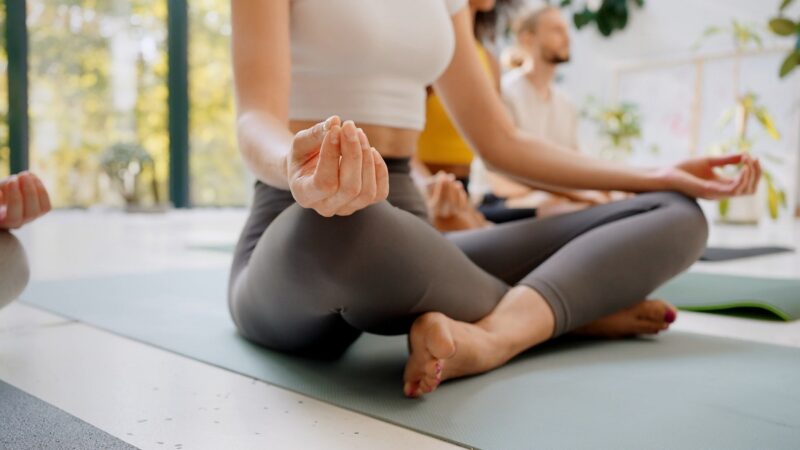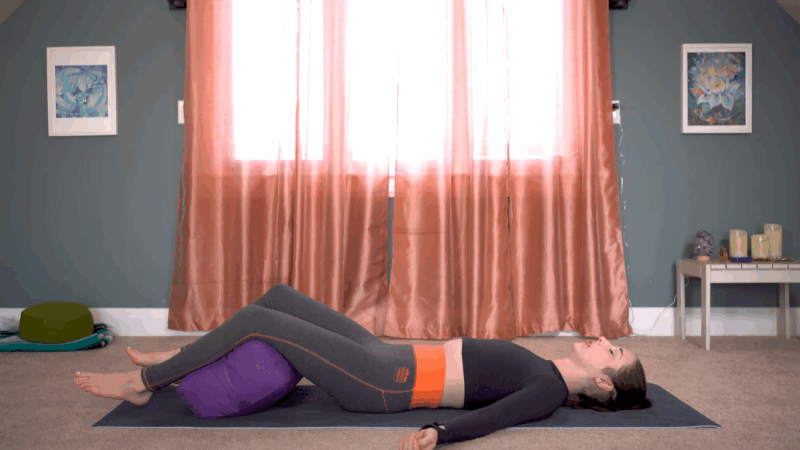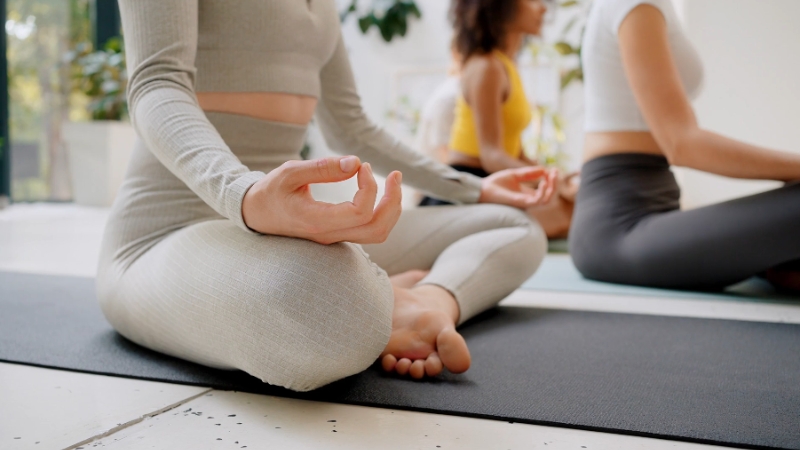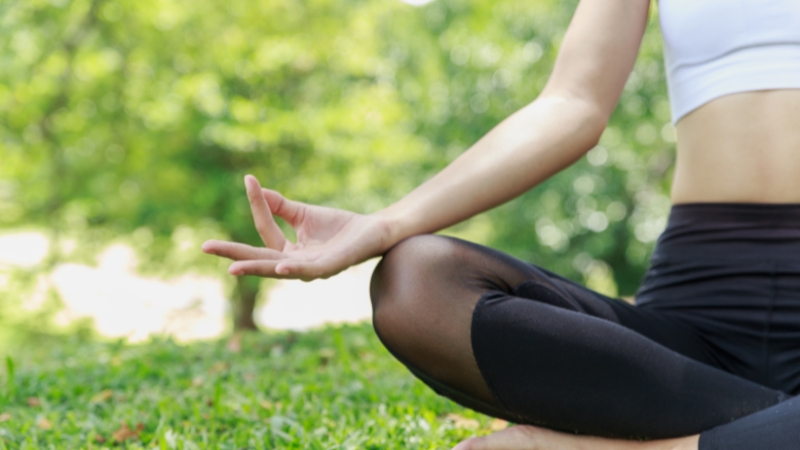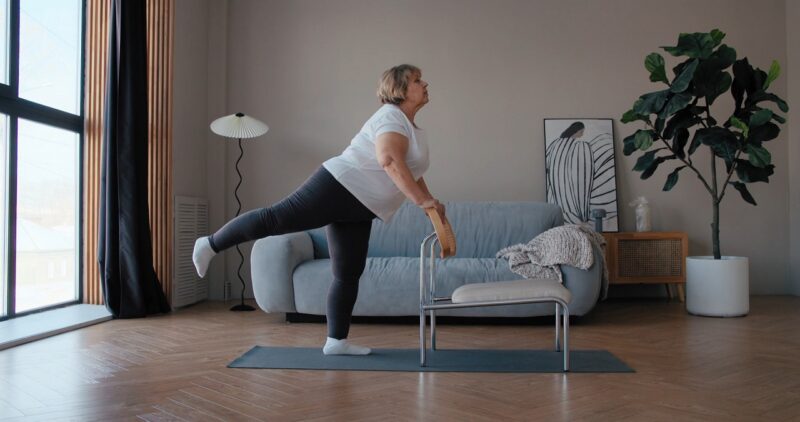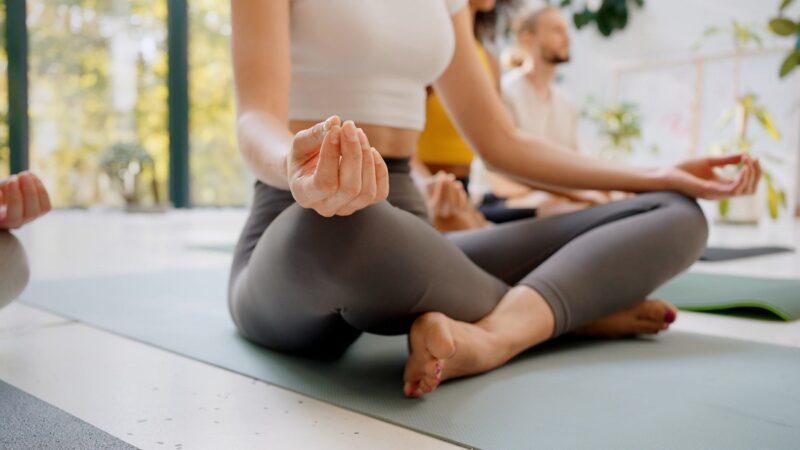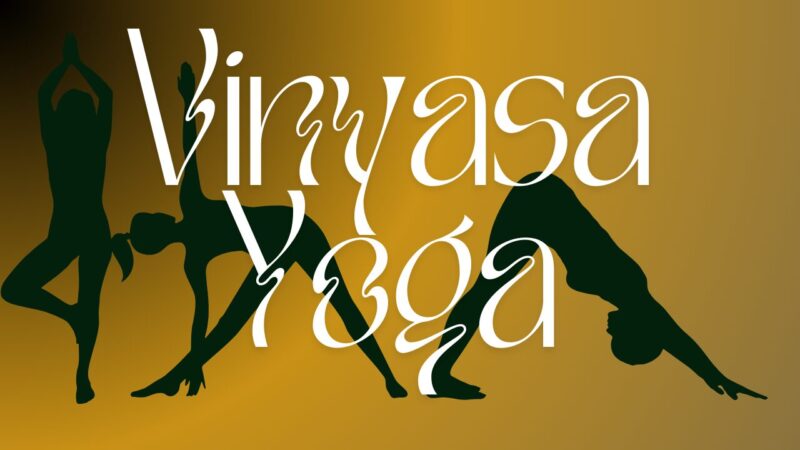
Share Post:
Vinyasa yoga has gained popularity for good reason. This dynamic practice, which links breath with movement, offers a unique blend of physical and mental benefits that can enhance overall well-being. Whether you’re new to yoga or have been practicing for a while, Vinyasa provides a refreshing way to engage your body and mind.
You may be curious about the specific advantages of incorporating Vinyasa into your routine. The truth is, this yoga style goes beyond just improving flexibility and strength. Research has shown that Vinyasa yoga can improve mental clarity, reduce stress levels, and even improve cardiovascular health.
This article will explore 19 science-backed benefits of Vinyasa yoga that highlight its potential to transform your life.
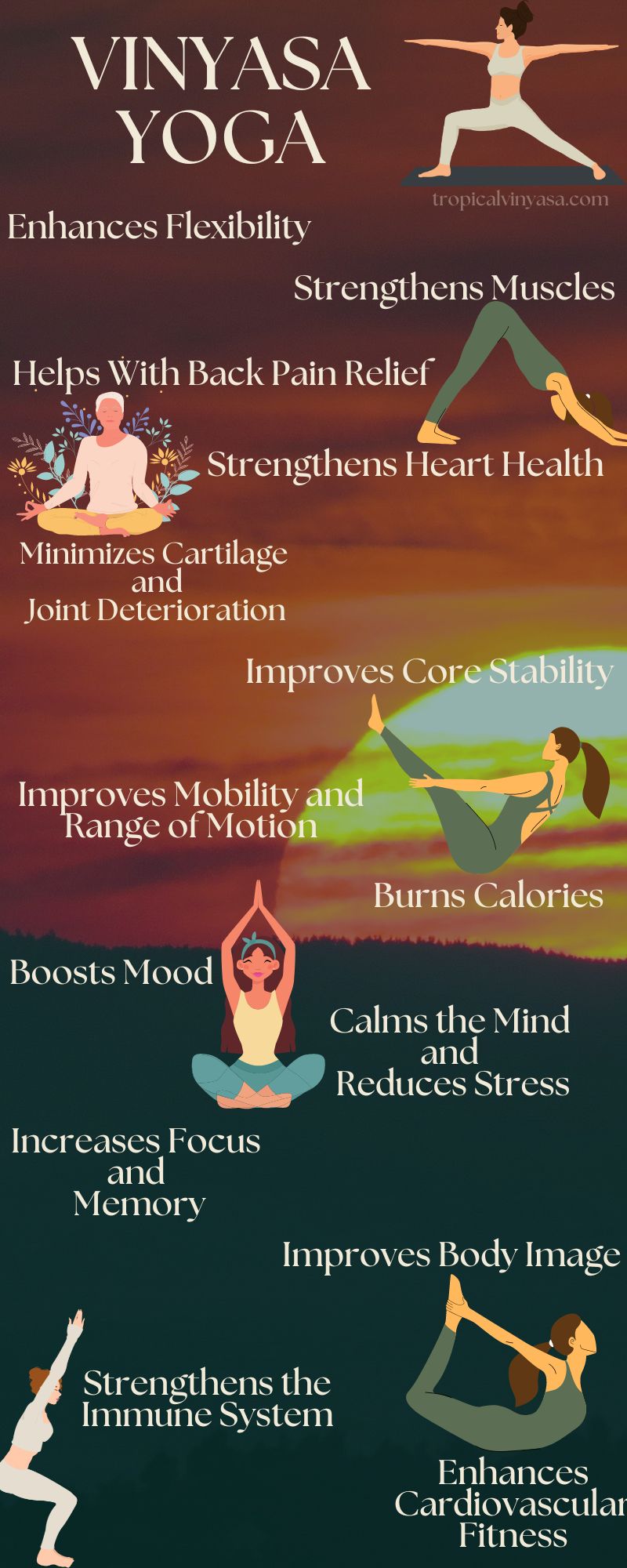
These Are the Main Reasons to Start With Vinyasa Yoga
- Enhances Flexibility
- Strengthens Muscles
- Helps With Back Pain Relief
- Strengthens Heart Health
- Minimizes Cartilage and Joint Deterioration
- Improves Core Stability
- Improves Mobility and Range of Motion
- Burns Calories
- Boosts Mood
- Calms the Mind and Reduces Stress
- Increases Focus and Memory
- Strengthens the Immune System
- Improves Body Image
- Enhances Cardiovascular Fitness
1. Enhances Flexibility
One of the most recognized benefits of Vinyasa yoga is its ability to significantly enhance flexibility. Flexibility refers to the range of motion in your joints and muscles, which is crucial for overall physical health and well-being. Regular practice of Vinyasa yoga involves a series of dynamic movements that stretch and strengthen various muscle groups, leading to improved flexibility over time.
A study published in The Journal of Sports Medicine and Physical Fitness found that participants who practiced Vinyasa yoga experienced significant improvements in flexibility and overall physical fitness.
2. Strengthens Muscles
Poses like Plank, Chaturanga, and Warrior not only challenge your balance but also target the core, arms, legs, and back muscles. According to a study published in the Journal of Strength and Conditioning Research, participants who practiced yoga regularly showed significant improvements in muscle strength compared to those who did not. Moreover, Vinyasa yoga promotes functional strength, which is essential for daily activities and overall physical performance.
As you progress in your practice, you’ll likely notice increased muscle tone and improved physical resilience, making it easier to tackle both yoga sessions and everyday tasks with greater ease and confidence.
3. Helps With Back Pain Relief
Vinyasa yoga can be an effective remedy for alleviating back pain, a common issue that affects many people due to factors like poor posture, sedentary lifestyles, or injury. The practice emphasizes alignment and body awareness, which are crucial in reducing tension and strain on the back.
Research published in The Journal of Pain found that individuals who engaged in regular yoga practice reported significant reductions in chronic lower back pain.
Additionally, Vinyasa yoga encourages mindful movement and deep breathing, both of which can help relieve stress and tension that often contribute to back discomfort.
Also read A Complete Guide to Yoga Sculpt; Benefits and 5 Signature Moves
4. Strengthens Heart Health
Vinyasa yoga is beneficial for heart health, as it combines physical activity with breath control and mindfulness. The dynamic sequences elevate the heart rate, providing a cardiovascular workout that can improve overall heart function.
A study published in the European Journal of Preventive Cardiology found that individuals who practiced yoga regularly experienced lower blood pressure, improved circulation, and reduced levels of stress hormones, all of which contribute to a healthier heart.
Moreover, Vinyasa yoga promotes better heart health by encouraging a balanced lifestyle. The practice often emphasizes the importance of mindfulness and stress reduction, which are crucial for maintaining a healthy heart.
5. Minimizes Cartilage and Joint Deterioration
The fluid movements and varied poses in Vinyasa yoga encourage the full range of motion in joints, which helps to keep them flexible and healthy. Regularly engaging in yoga can stimulate the production of synovial fluid, which lubricates joints and reduces friction, thereby preventing wear and tear over time.
6. Improves Core Stability
The core comprises various muscles in the abdomen, lower back, and pelvis that work together to support the spine and maintain proper posture. Many Vinyasa poses, such as Plank, Boat Pose, and Warrior III, engage these core muscles, promoting strength and stability throughout the practice.
7. Improves Mobility and Range of Motion
The flowing sequences in Vinyasa yoga, such as Sun Salutations, encourage the body to move through its full range of motion. This not only helps to stretch tight muscles but also strengthens them, creating a balanced approach to mobility.
8. Burns Calories
For instance, a person weighing around 150 pounds can burn up to 600 calories in an hour-long session, while someone weighing 180 pounds may burn about 500 calories in the same time frame.
9. Boosts Mood
The combination of physical movement, breath control, and mindfulness in Vinyasa practice creates a holistic approach that can significantly elevate one’s emotional well-being.
10. Calms the Mind and Reduces Stress
The combination of flowing movements, deep breathing, and mindfulness creates an environment that encourages participants to focus on the present moment.
11. Increases Focus and Memory
The practice requires concentration on breath, movement, and body alignment, which helps sharpen mental clarity and attention.
The heightened state of awareness can translate into improved performance in daily tasks, academic pursuits, and professional responsibilities.
12. Strengthens the Immune System
The combination of physical activity, controlled breathing, and stress reduction in Vinyasa yoga contributes to improved immune function. Research published in the journal Psychosomatic Medicine indicates that regular yoga practice can lead to increased levels of immunoglobulin A (IgA), an antibody that plays a crucial role in the immune response.
13. Improves Body Image
As practitioners move through various poses, they learn to appreciate their bodies for what they can do rather than how they look.
14. Enhances Cardiovascular Fitness
The continuous flow of poses in Vinyasa practice provides a moderate-intensity workout that can be comparable to traditional aerobic exercises.
You may also like 9 Yoga Asanas To Treat Endometriosis
FAQs
Last Words
The flowing movements and focus on breath create a unique experience that not only challenges the body but also promotes mindfulness and self-awareness.
Related Posts:
- Introduction to Vinyasa Yoga - Elevate Your Practice
- What Is Somatic Yoga and How Does It Work? -…
- A Complete Guide to Yoga Sculpt - Benefits and 5…
- 9 Amazing Benefits of Vrikshasana (Tree Pose) You…
- Should You Do Yoga with Hernia? Poses to Try And…
- 10 Must-Try Yoga Wheel Poses for a Complete Body Workout




